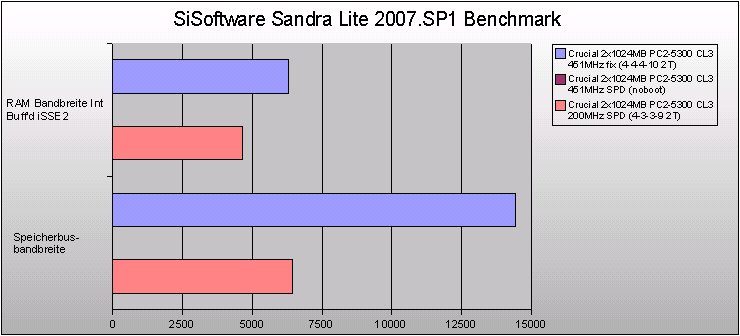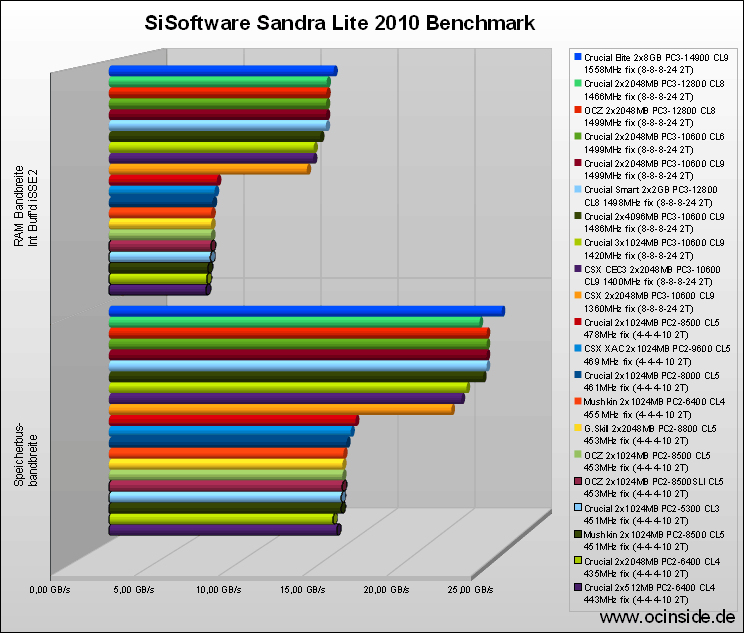
Let us begin with the most important part of the test report, because the optics is of course rather secondary and the possible stable performance is the most important factor. The test results are based on an ASRock AM2XLI eSATA2 SLI motherboard with an Athlon 64 Socket AM2 3000+ CPU on different frequencies depending on the reference clock for the different memory benchmarks. Thus the multiplier adjustment remains on 9x with all frequencies, because an adjustment for the CPU in half multiplier steps would be too inaccurate to get nearly the same CPU frequency for all tests.
Microsoft Windows XP Professional SP2 is used as operating system. The stability was examined with the software Memtest86
and SiSoft Sandra Lite 2007.SP1 program is used for all benchmarks, since it offers extensive adjustments and a fast result comparison.
First the maximum possible frequency of the memory module was determined. The memory frequency was increased in small steps with a fixed memory timing of 4-4-4-10 2T and default memory voltage, as long as the detailed memory test with Memtest86 runs without any errors. This quite long testing time ensured that this frequency works really stable with these modules.
The highest possible frequency with 4-4-4-10 (Tcl Trcd Tras Trp) timings was stable with amazing 451 MHz !
With increased voltages or lower timings it’s possible to run clearly higher frequencies, because the frequency values and timings depends directly from each other.
This highest possible frequency was compared to two adjustments. On the one hand 443 MHz with SPD values (these are given by the manufacturer in the SPD IC), and on the other hand 200 MHz (x2) with SPD values. Unfortunately the two modules could not be used with the highest possible frequency of 451 MHz with SPD values, since those SPD EEPROM Timings were too fast with this very high frequency. To that extent this benchmark value remains unfortunately empty.
By the way, the “Memory Bus Range” is no benchmark value, but this value is quite simple to calculate by the frequency and is useful for the benchmark comparison.
Here’re the benchmark results:
| Frequency | Timing | RAM Range Int Buff’d iSSE2 | Memory bus range |
| 451 MHz | fest (4-4-4-10 2T) | 6309 MB/s | 14432 MB/s |
| 451 MHz | SPD (noboot) | – | – |
| 200 MHz | SPD (4-3-3-9 2T) | 4651 MB/s | 6432 MB/s |
Here’s a diagram of the benchmark values:

Here is a direct benchmark result comparison of some DDR2 and DDR memory modules:

The result of the Crucial PC2-5300 CL3 memory is extraordinarily good, because in the direct compare to the previously tested PC2-6400 CL4 modules they’re clearly faster. Despite lower frequency (PC2-5300 to PC2-6400) the modules achieve higher overclocking results due to the faster latency timings (CL3 to CL4).

